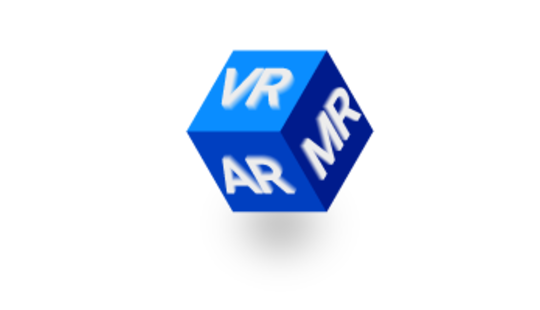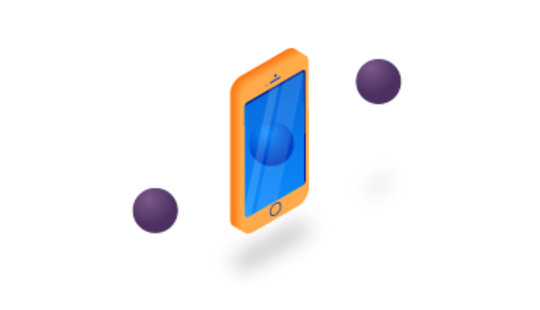-
Product Management
Software Testing
Technology Consulting
-
Multi-Vendor Marketplace
Online StoreCreate an online store with unique design and features at minimal cost using our MarketAge solutionCustom MarketplaceGet a unique, scalable, and cost-effective online marketplace with minimum time to marketTelemedicine SoftwareGet a cost-efficient, HIPAA-compliant telemedicine solution tailored to your facility's requirementsChat AppGet a customizable chat solution to connect users across multiple apps and platformsCustom Booking SystemImprove your business operations and expand to new markets with our appointment booking solutionVideo ConferencingAdjust our video conferencing solution for your business needsFor EnterpriseScale, automate, and improve business processes in your enterprise with our custom software solutionsFor StartupsTurn your startup ideas into viable, value-driven, and commercially successful software solutions -
-
- Case Studies
- Blog
VR vs AR vs MR: Differences and Real-Life Applications
Reality technologies are gaining momentum. Have a look at the latest advancements in this industry:
- Apple’s ARKit framework allows millions of iPhone and iPad owners to experience augmented reality (AR).
- Facebook is working hard to bring virtual reality (VR) to wider audiences.
- Microsoft is using mixed reality (MR) to combine virtual objects with the real world.
But do you have a clear understanding of the differences between VR, AR, and MR? We’ve written this guide to explain what reality technologies are and how businesses can benefit from them in 2022.

Virtual Reality (VR)
There are lots of definitions of the term Virtual Reality, and some are quite long and complicated. Let’s be brief and clear: virtual reality is an artificial digital environment that completely replaces the real world.
With VR, users experience artificial sounds and sights and feel as if they’re in a digital world. Imagine opening your eyes and seeing a computer-generated world all around you; you can move in this environment and even interact with it. That’s what virtual reality is like.
Special VR headsets are used to immerse users in virtual reality. There are two main types of VR headsets:
- PC-connected headsets
As their name suggests, these VR headsets are connected to a computer (or a gaming console) that generates high-quality virtual experiences. The processing power of modern computers is huge, so they can generate realistic and persuasive digital worlds.
VR headsets can be used along with special controllers. In this case, users can actually interact with the virtual environment they’re immersed in. As might be expected, PC-connected headsets provide the most engaging VR experiences.
The most popular PC-connected VR headsets are HTC Vive, Samsung Odyssey+, PlayStation VR, and Oculus Quest.
- Standalone headsets
As you’ve probably guessed, PC-connected VR headsets are quite expensive and relatively few people are willing to drop that kind of cash on them. Yet there’s another way to experience virtual reality – using standalone headsets that don’t need to be connected to a computer or console.
Most standalone VR headsets use a smartphone screen to provide the virtual reality experience. Such devices are quite affordable, as users can simply insert their smartphone into the headset to enjoy VR. Samsung Gear VR, Google Daydream, and Google Cardboard work exactly this way.
Other standalone headsets work on their own. Facebook’s Oculus Go, for example, needs neither a computer nor a smartphone to generate virtual experiences. This device makes virtual reality technology a lot more common and affordable.
Immersive Videos as a Form of VR
Avid internet users know that YouTube supports 360-degree videos. Today, these videos are becoming increasingly widespread. Unlike conventional videos with a limited field of view, 360-degree videos are omnidirectional and, therefore, immersive.
Though this classification is disputed, immersive videos (as well as photos) are considered by many as a form of virtual reality. Users need to wear headsets to experience them to their fullest. For example, in a 360-degree video a user can move their head and look around the live scene.
Real-Life Applications of Virtual Reality
What’s the first industry you think of when you hear the term virtual reality? It’s probably gaming. The gaming industry has already embraced this technology – for instance, you can connect the PlayStation VR headset to a PlayStation console and enjoy VR experiences.
Gaming, however, isn’t the only field where virtual reality technology can be used. Have a look our list of the most important applications of VR.
Education
VR learning content can revolutionize education, making learning immersive and more engaging. And apart from schools and universities, virtual experiences can also help businesses train their staff. Unimersiv is already offering VR educational content for businesses and institutions.
Real Estate
Photos have been used by real estate agents to showcase properties for decades. But now, agents can use virtual reality for this purpose. Unlike photos, VR is immersive, so potential buyers can take three-dimensional walkthroughs and better understand what each property has to offer before visiting in person.
Matterport is already using 360-degree video showcases to help agents better interact with their clients.
Moreover, VR can help architects show their projects to clients as virtual reality enables clients to see what their future property will look like.
Healthcare
Being immersive, virtual reality can give an in-depth look into human anatomy, helping doctors better understand their patients’ needs. VR technology also comes in handy for surgical training. A platform built by Medical Realities uses 360-degree videos and virtual anatomy to train future surgeons.
Marketing
Thanks to virtual reality, businesses can reach out to their audiences by launching immersive and engaging marketing campaigns. This is particularly important in the age of online shopping, as VR experiences help people get a feel for products without leaving their homes.
For example, IKEA created a VR application featuring a kitchen. Wearing a VR headset and using a controller, people can explore this virtual kitchen and even interact with it.
Travel
The travel industry has always been quick to adopt new technologies, and it’s not surprising – people want to know what they’re paying for. Virtual tours can help travel businesses promote destinations and attract tourists. VR is also a great way for people who have a harder time getting around to explore the world.
Google StreetView is the best example of how VR technology can be used in the travel industry. Though it’s possible to view panoramic images right on a computer, users can also enable Google Cardboard mode for a virtual reality experience.
Augmented Reality (AR)
Augmented has already become a buzzword, but this technology is still a mystery for many people. So let’s give a clear explanation: augmented reality is the overlay of digital content on the real-world environment. Virtual objects can be in various forms: images, videos, or interactive data.
In other words, if you see the real world supplemented with digital objects, that’s AR. Imagine you want to buy a piece of furniture – a chair, for example. Augmented reality technology can help you check how different chairs will look in your room and pick the one that fits best.
So how can you bring AR experiences to life? There are two main ways:
- Portable devices
AR is the most accessible reality technology, as people can use their smartphones or tablets to run augmented reality applications. AR apps use a phone camera to capture the real world; virtual objects are then overlaid and users can see them on their smartphone screen.
That’s how common AR apps work, the best example being Pokemon Go. Millions of people have used their smartphones to play this game and catch virtual Pokemons that they can only see on their smartphone screens.
- Smart glasses and AR headsets
Another way to create AR experiences is to use special smart glasses or headsets. Unlike VR headsets, these AR glasses and headsets don’t immerse users into a fully virtual environment but just add digital objects to the real world. With Glass, for example, digital data is projected right in front of the user’s eyes.
Applications of Augmented Reality Technology
Now that you know what AR is and how it works, try to guess what industries this technology can be used in. And no, gaming doesn’t count. Though Pokemon Go was a real breakthrough in mobile games, augmented reality technology has a lot more to offer.
AR, in fact, proves useful in a variety of spheres, from advertising to medicine. Let’s have a look at what fields augmented reality technology can be used in.
Advertising
Augmented reality helps marketers and advertisers reach out to their audiences more efficiently. Unlike conventional ads, AR ads are interactive and engaging so they not only promote sales but increase brand awareness as well.
Manufacturing
Manufacturing is an industry where new technologies can give a competitive advantage. Augmented reality helps companies improve productivity and quality. How? Manufacturing workers can get assistance from AR gadgets to reduce human error, save time, and increase efficiency.
For example, Upskill offers an augmented reality platform for industrial applications. Some of the world’s biggest corporations, such as General Electric and Boeing, are already using AR in their manufacturing processes.
Retail
Millions of people prefer making purchases on the internet. Online shopping is convenient, time-saving, and money-saving. But what if an item isn’t exactly what the buyer expected when it arrives? AR apps are a great solution to this problem, as they allow customers to virtually view or even try on products sold online.
To experience AR in online shopping, try IKEA Place. This augmented reality application for iOS helps users check whether a piece of furniture from IKEA’s catalog fits into their home.
Navigation
Augmented reality is particularly useful for navigation. Virtual objects overlapping the real world can show directions and guide people to locations. Many businesses use AR to attract people to their stores; Yelp, for example, has a Monocle option that shows you the nearest cafes and restaurants.
Maintenance and Repairs
Imagine you need to repair something and you don’t know how. No doubt you’d either spend a lot of time watching DIY videos on the internet or simply ask a professional to do it for you. There’s now a third option, however – you can use a special augmented reality application to help you perform a repair.
If you think this is something from the future, you’re quite mistaken. Businesses and individuals can use augmented reality solutions to carry out maintenance and repairs today. Learn how an AR app developed by Inglobe Technologies facilitates car maintenance:
Mixed Reality (MR)
Now that you know the difference between VR and AR, it’s time to take a closer look at MR. In mixed reality (sometimes called hybrid reality), virtual content is not only overlaid on the real environment (as in AR) but is anchored to and interacts with that environment.
Put simply, in mixed reality you can see virtual objects just like you can in augmented reality, but these objects can also interact with the real world. In a sense, mixed reality is a more immersive and interactive type of augmented reality.

There can be, however, a different form of mixed reality – when users see and interact with a completely virtual environment overlaid on the real world around them. If this sounds confusing, think about it this way: imagine you’re interacting with a completely digital environment but you’re still in your room. What if you trip over a physical object in your room? To avoid this problem, a headset must be able to track the real world and adjust the virtual environment accordingly. This kind of mixed reality is closer to VR than AR; in fact, some VR headsets have sensors to track the physical environment too.
Needless to say, different types of devices are required to experience these two forms of mixed reality:
- Holographic devices
These headsets have translucent glasses that allow you to perfectly see your surroundings. Virtual experiences are created with the help of holograms. That’s how Microsoft HoloLens 2 works.
- Immersive devices
These headsets have non-translucent displays that completely block out the real world (just like VR headsets) and use cameras for tracking. Windows mixed reality headsets from Acer and HP work this way.
What Opportunities Does Mixed Reality Provide?
Take any science fiction novel from the bookshelf and you’ll almost certainly come across a sophisticated holographic communication device. Well, mixed reality takes human civilization one step closer to the future described in science fiction.
So what industries can mixed reality be used in? Let’s mention several industries with a huge potential for MR.
Communications
MR technology enables immersive communication experiences that help people collaborate more efficiently. Employees can put on headsets and start collaborating without being blocked off from the real world. If you can’t imagine how this works, check out Skype for Microsoft HoloLens:
Education
Just like VR and AR, mixed reality comes in handy in education. Unlike VR, MR allows students to see both the real world and holograms. This provides immersive learning experiences and helps people better understand what they’re studying. Mixed reality can be used for many purposes, from school education to medical training. Take a look at how augmented reality works in education:
Manufacturing
Mixed reality technology facilitates manufacturing processes by providing workers with real-time assistance. Workers can see holographic instructions right in front of their eyes so they always know what to do. This reduces the risk of human error and substantially improves quality. MR is also helpful for maintenance and repairs, particularly in industries that require expertise and precision.
Manufacturing companies have already started testing mixed reality technology in action. For example, look at how Renault Trucks uses MR to control quality at one of its factories:
Reality Technologies Recap
Is your head in a tailspin after so much information?
It’s time to wrap up, so let’s briefly recap the distinctives of VR, AR, and MR:
- VR is a fully virtual environment
- AR is a real-world environment overlaid with virtual objects
- MR is a real-world environment plus virtual objects you can interact with
Augmented, virtual, and mixed reality technologies are quickly developing. Subscribe to our newsletter to keep up on the latest news.












